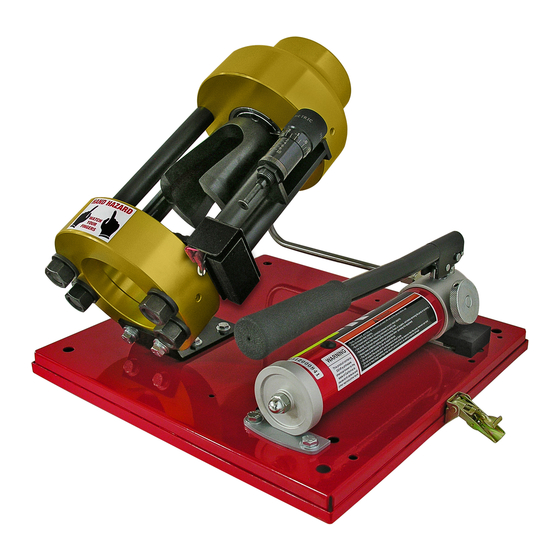Custom Crimp D100 SERIES Gebruikershandleiding - Pagina 7
Blader online of download pdf Gebruikershandleiding voor {categorie_naam} Custom Crimp D100 SERIES. Custom Crimp D100 SERIES 12 pagina's. Hydraulic hose crimper
Ook voor Custom Crimp D100 SERIES: Gebruikershandleiding (13 pagina's)

CRIMPING WITH A DOUBLE ANGLE DIE
• The Double Angle Dies are special purpose dies designed to
double the crimping force thus allowing larger fittings to be
crimped with less vertical force.
The limitation, however, is that they must crimp to a near
fully closed position and therefore a given die set can crimp
only limited range above the diameter shown on the die ring.
• To use the Double Angle Die set, remove the flat pressure plate
from the cone base and replace it with the compression plate
labeled 'DBL BASE' whose angle matches that on the Double
Angle Die.
• Seat the Double Angle Die in the conical recess of the 'DBL
BASE' cone and position the hose and fitting as specified by the
fitting manufacturer.
• Place the 'DBL TOP' Compression Ring on top of the die set
making sure that the fitting is still correctly positioned. Slide the
pusher into place on the cylinder ram.
Note: the angles on the Double Angle compression ring and
the Standard Compression ring are not the same. The DBL
Top compression ring must be used with the Double Angle Die
set.
• Set the Micro-Crimp Adjuster at the recommended setting
specified by the hose and fitting manufacturer.
Note: The direct reading feature of the Micro-Crimp Adjuster is
not applicable with Double Angle Dies. Follow the hose and
fitting manufacturer's recommendations
• Cycle the crimper until the white circumferential line on the
Micro-Crimp Sight Button just appears on the top of the Micro-
Crimp Adjuster or the power unit shuts off for the D101S unit.
Note that if the die is not brought to a near fully closed condition,
there is the possibility that the crimps will be tapered along the
length of the crimp diameter.
• Check the crimp diameter to be certain that it is within the specifications of the hose and
fitting manufacturer.
Page
7
